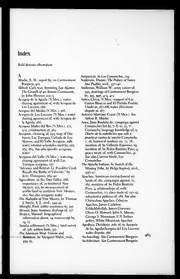
2018 AHA Ischemic Stroke Guideline Update 2018 PDF
Preview 2018 AHA Ischemic Stroke Guideline Update 2018
AHA/ASA Guideline 2018 Guidelines for the Early Management of Patients With Acute Ischemic Stroke A Guideline for Healthcare Professionals From the American Heart Association/American Stroke Association Reviewed for evidence-based integrity and endorsed by the American Association of Neurological Stroke Surgeons and Congress of Neurological Surgeons Endorsed by the Society for Academic Emergency Medicine William J. Powers, MD, FAHA, Chair; Alejandro A. Rabinstein, MD, FAHA, Vice Chair; Teri Ackerson, BSN, RN; Opeolu M. Adeoye, MD, MS, FAHA; Nicholas C. Bambakidis, MD, FAHA; Kyra Becker, MD, FAHA; José Biller, MD, FAHA; DDDDDDDDDDDDDDDDDDDDDDDDDDDDDDDDDDDDDDDDDDDDDDDDDDDDDDDDDDDDDDDDDDDDDDDDDDDDDDDDDDDDDDDDDDDDDDDDDDDDDDDDDDDDDDDDDDDDDDDDDDDDDDDDDDDDDDDDDDDDDDDDDDDDDDDDDDDDDDDDDDDDDDDDDDDDDDDDDDDDDDDDDDDDDDDDDDDDDDDDDDDDDDDDDDDDDDDDDDDDDDDDDDDDDDDDDDDDDDDDDDDDDDDDDDDDDDDDDDDDDDDDDDDDDDDDDDDDDDDDD ooooooooooooooooooooooooooooooooooooooooooooooooooooooooooooooooooooooooooooooooooooooooooooooooooooooooooooooooooooooooooooooooooooooooooooooooooooooooooooooooooooooooooooooooooooooooooooooooooooooooooooooooooooooooooooooooooooooooooooooooooooooooooooooooooooooooooooooooooooooooo Michael Brown, MD, MSc; Bart M. Demaerschalk, MD, MSc, FAHA; Brian Hoh, MD, FAHA; wwwwwwwwwwwwwwwwwwwwwwwwwwwwwwwwwwwwwwwwwwwwwwwwwwwwwwwwwwwwwwwwwwwwwwwwwwwwwwwwwwwwwwwwwwwwwwwwwwwwwwwwwwwwwwwwwwwwwwwwwwwwwwwwwwwwwwwwwwwwwwwwwwwwwwwwwwwwwwwwwwwwwwwwwwwwwwwwwwwwwwwwwwwwwwwwwwwwwwwwwwwwwwwwwwwwwwwwwwwwwwwwwwwwwwwwwwwwwwwwwwwwwwwwwwwwwwwwwwwwwwwwwwwwwwwwwwwwwwwww nnnnnnnnnnnnnnnnnnnnnnnnnnnnnnnnnnnnnnnnnnnnnnnnnnnnnnnnnnnnnnnnnnnnnnnnnnnnnnnnnnnnnnnnnnnnnnnnnnnnnnnnnnnnnnnnnnnnnnnnnnnnnnnnnnnnnnnnnnnnnnnnnnnnnnnnnnnnnnnnnnnnnnnnnnnnnnnnnnnnnnnnnnnnnnnnnnnnnnnnnnnnnnnnnnnnnnnnnnnnnnnnnnnnnnnnnnnnnnnnnnnnnnnnnnnnnnnnnnnnnnnnnnnnnnnnnnnnnnnnn Edward C. Jauch, MD, MS, FAHA; Chelsea S. Kidwell, MD, FAHA; lololololololololololololololololololololololololololololololololololololololololololololololololololololololololololololololololololololololololololololololololololololololololololololololololololololololololololololololololololololololololololololololololololololololololololololololololololololololololololololololololololololololololololololololololololololololololololololololololololololololololololololololololololololololololololololololololololololololololololololololololololololololololololololololololololololololololololololololololololololololololo aaaaaaaaaaaaaaaaaaaaaaaaaaaaaaaaaaaaaaaaaaaaaaaaaaaaaaaaaaaaaaaaaaaaaaaaaaaaaaaaaaaaaaaaaaaaaaaaaaaaaaaaaaaaaaaaaaaaaaaaaaaaaaaaaaaaaaaaaaaaaaaaaaaaaaaaaaaaaaaaaaaaaaaaaaaaaaaaaaaaaaaaaaaaaaaaaaaaaaaaaaaaaaaaaaaaaaaaaaaaaaaaaaaaaaaaaaaaaaaaaaaaaaaaaaaaaaaaaaaaaaaaaaaaaaaaaaaaaaaaa ddddddddddddddddddddddddddddddddddddddddddddddddddddddddddddddddddddddddddddddddddddddddddddddddddddddddddddddddddddddddddddddddddddddddddddddddddddddddddddddddddddddddddddddddddddddddddddddddddddddddddddddddddddddddddddddddddddddddddddddddddddddddddddddddddddddddddddddddddddddddd Thabele M. Leslie-Mazwi, MD; Bruce Ovbiagele, MD, MSc, MAS, MBA, FAHA; eeeeeeeeeeeeeeeeeeeeeeeeeeeeeeeeeeeeeeeeeeeeeeeeeeeeeeeeeeeeeeeeeeeeeeeeeeeeeeeeeeeeeeeeeeeeeeeeeeeeeeeeeeeeeeeeeeeeeeeeeeeeeeeeeeeeeeeeeeeeeeeeeeeeeeeeeeeeeeeeeeeeeeeeeeeeeeeeeeeeeeeeeeeeeeeeeeeeeeeeeeeeeeeeeeeeeeeeeeeeeeeeeeeeeeeeeeeeeeeeeeeeeeeeeeeeeeeeeeeeeeeeeeeeeeeeeeeeeeeee ddddddddddddddddddddddddddddddddddddddddddddddddddddddddddddddddddddddddddddddddddddddddddddddddddddddddddddddddddddddddddddddddddddddddddddddddddddddddddddddddddddddddddddddddddddddddddddddddddddddddddddddddddddddddddddddddddddddddddddddddddddddddddddddddddddddddddddddddddddddddd fro fro fro fro fro fro fro fro fro fro fro fro fro fro fro fro fro fro fro fro fro fro fro fro fro fro fro fro fro fro fro fro fro fro fro fro fro fro fro fro fro fro fro fro fro fro fro fro fro fro fro fro fro fro fro fro fro fro fro fro fro fro fro fro fro fro fro fro fro fro fro fro fro fro fro fro fro fro fro fro fro fro fro fro fro fro fro fro fro fro fro fro fro fro fro fro fro fro fro fro fro fro fro fro fro fro fro fro fro fro fro fro fro fro fro fro fro fro fro fro fro fro fro fro fro fro fro fro fro fro fro fro fro fro fro fro fro fro fro fro fro fro fro fro fro fro fro fro fro fro fro fro fro fro fro fro fro fro fro fro fro fro fro fro fro fro fro fro fro fro fro fro fro fro fro fro fro fro fro fro fro fro fro fro fro fro fro fro fro fro fro fro fro fro fro fro fro fro fro fro fro fro fro fro fro fro fro fro fro fro fro fro fro fro fro fro fro fro fro fro fro fro fro fro fro fro fro fro fro fro fro fro fro fro fro fro fro fro fro fro fro fro fro fro fro fro fro fro fro fro fro fro fro fro fro fro fro fro fro fro fro fro fro fro fro fro fro fro fro fro fro fro fro fro fro fro fro fro fro fro fro Phillip A. Scott, MD, MBA, FAHA; Kevin N. Sheth, MD, FAHA; mmmmmmmmmmmmmmmmmmmmmmmmmmmmmmmmmmmmmmmmmmmmmmmmmmmmmmmmmmmmmmmmmmmmmmmmmmmmmmmmmmmmmmmmmmmmmmmmmmmmmmmmmmmmmmmmmmmmmmmmmmmmmmmmmmmmmmmmmmmmmmmmmmmmmmmmmmmmmmmmmmmmmmmmmmmmmmmmmmmmmmmmmmmmmmmmmmmmmmmmmmmmmmmmmmmmmmmmmmmmmmmmmmmmmmmmmmmmmmmmmmmmmmmmmmmmmmmmmmmmmmmmmmmmmmmmmmmmmmmmm Andrew M. Southerland, MD, MSc; Deborah V. Summers, MSN, RN, FAHA; h h h h h h h h h h h h h h h h h h h h h h h h h h h h h h h h h h h h h h h h h h h h h h h h h h h h h h h h h h h h h h h h h h h h h h h h h h h h h h h h h h h h h h h h h h h h h h h h h h h h h h h h h h h h h h h h h h h h h h h h h h h h h h h h h h h h h h h h h h h h h h h h h h h h h h h h h h h h h h h h h h h h h h h h h h h h h h h h h h h h h h h h h h h h h h h h h h h h h h h h h h h h h h h h h h h h h h h h h h h h h h h h h h h h h h h h h h h h h h h h h h h h h h h h h h h h h h h h h h h h h h h h h h h h h h h h h h h h h h h h h ttpttpttpttpttpttpttpttpttpttpttpttpttpttpttpttpttpttpttpttpttpttpttpttpttpttpttpttpttpttpttpttpttpttpttpttpttpttpttpttpttpttpttpttpttpttpttpttpttpttpttpttpttpttpttpttpttpttpttpttpttpttpttpttpttpttpttpttpttpttpttpttpttpttpttpttpttpttpttpttpttpttpttpttpttpttpttpttpttpttpttpttpttpttpttpttpttpttpttpttpttpttpttpttpttpttpttpttpttpttpttpttpttpttpttpttpttpttpttpttpttpttpttpttpttpttpttpttpttpttpttpttpttpttpttpttpttpttpttpttpttpttpttpttpttpttpttpttpttpttpttpttpttpttpttpttpttpttpttpttpttpttpttpttpttpttpttpttpttpttpttpttpttpttpttpttpttpttpttpttpttpttpttpttpttpttpttpttpttpttpttpttpttpttpttpttpttpttpttpttpttpttpttpttpttpttpttpttpttpttpttpttpttpttpttpttpttpttpttpttpttpttpttpttpttpttpttpttpttpttpttpttpttpttpttpttpttpttpttpttpttpttpttpttpttpttpttpttpttpttpttpttpttpttpttpttpttpttpttpttpttpttpttpttpttpttpttpttpttpttpttpttpttpttpttpttpttpttpttpttpttp David L. Tirschwell, MD, MSc, FAHA; on behalf of the American Heart Association Stroke Council ://s://s://s://s://s://s://s://s://s://s://s://s://s://s://s://s://s://s://s://s://s://s://s://s://s://s://s://s://s://s://s://s://s://s://s://s://s://s://s://s://s://s://s://s://s://s://s://s://s://s://s://s://s://s://s://s://s://s://s://s://s://s://s://s://s://s://s://s://s://s://s://s://s://s://s://s://s://s://s://s://s://s://s://s://s://s://s://s://s://s://s://s://s://s://s://s://s://s://s://s://s://s://s://s://s://s://s://s://s://s://s://s://s://s://s://s://s://s://s://s://s://s://s://s://s://s://s://s://s://s://s://s://s://s://s://s://s://s://s://s://s://s://s://s://s://s://s://s://s://s://s://s://s://s://s://s://s://s://s://s://s://s://s://s://s://s://s://s://s://s://s://s://s://s://s://s://s://s://s://s://s://s://s://s://s://s://s://s://s://s://s://s://s://s://s://s://s://s://s://s://s://s://s://s://s://s://s://s://s://s://s://s://s://s://s://s://s://s://s://s://s://s://s://s://s://s://s://s://s://s://s://s://s://s://s://s://s://s://s://s://s://s://s://s://s://s://s://s://s://s://s://s://s://s://s://s://s://s://s://s://s://s://s://s://s://s://s://s://s://s://s://s://s://s://s://s://s://s://s://s://s trotrotrotrotrotrotrotrotrotrotrotrotrotrotrotrotrotrotrotrotrotrotrotrotrotrotrotrotrotrotrotrotrotrotrotrotrotrotrotrotrotrotrotrotrotrotrotrotrotrotrotrotrotrotrotrotrotrotrotrotrotrotrotrotrotrotrotrotrotrotrotrotrotrotrotrotrotrotrotrotrotrotrotrotrotrotrotrotrotrotrotrotrotrotrotrotrotrotrotrotrotrotrotrotrotrotrotrotrotrotrotrotrotrotrotrotrotrotrotrotrotrotrotrotrotrotrotrotrotrotrotrotrotrotrotrotrotrotrotrotrotrotrotrotrotrotrotrotrotrotrotrotrotrotrotrotrotrotrotrotrotrotrotrotrotrotrotrotrotrotrotrotrotrotrotrotrotrotrotrotrotrotrotrotrotrotrotrotrotrotrotrotrotrotrotrotrotrotrotrotrotrotrotrotrotrotrotrotrotrotrotrotrotrotrotrotrotrotrotrotrotrotrotrotrotrotrotrotrotrotrotrotrotrotrotrotrotrotrotrotrotrotrotrotrotrotrotrotrotrotrotrotrotrotrotrotrotrotrotrotrotrotrotrotrotrotrotrotrotrotrotrotrotrotrotrotrotrotrotrotro kkkkkkkkkkkkkkkkkkkkkkkkkkkkkkkkkkkkkkkkkkkkkkkkkkkkkkkkkkkkkkkkkkkkkkkkkkkkkkkkkkkkkkkkkkkkkkkkkkkkkkkkkkkkkkkkkkkkkkkkkkkkkkkkkkkkkkkkkkkkkkkkkkkkkkkkkkkkkkkkkkkkkkkkkkkkkkkkkkkkkkkkkkkkkkkkkkkkkkkkkkkkkkkkkkkkkkkkkkkkkkkkkkkkkkkkkkkkkkkkkkkkkkkkkkkkkkkkkkkkkkkkkkkkkkkkkkkkkkkkk eeeeeeeeeeeeeeeeeeeeeeeeeeeeeeeeeeeeeeeeeeeeeeeeeeeeeeeeeeeeeeeeeeeeeeeeeeeeeeeeeeeeeeeeeeeeeeeeeeeeeeeeeeeeeeeeeeeeeeeeeeeeeeeeeeeeeeeeeeeeeeeeeeeeeeeeeeeeeeeeeeeeeeeeeeeeeeeeeeeeeeeeeeeeeeeeeeeeeeeeeeeeeeeeeeeeeeeeeeeeeeeeeeeeeeeeeeeeeeeeeeeeeeeeeeeeeeeeeeeeeeeeeeeeeeeeeeeeeeeee .a.a.a.a.a.a.a.a.a.a.a.a.a.a.a.a.a.a.a.a.a.a.a.a.a.a.a.a.a.a.a.a.a.a.a.a.a.a.a.a.a.a.a.a.a.a.a.a.a.a.a.a.a.a.a.a.a.a.a.a.a.a.a.a.a.a.a.a.a.a.a.a.a.a.a.a.a.a.a.a.a.a.a.a.a.a.a.a.a.a.a.a.a.a.a.a.a.a.a.a.a.a.a.a.a.a.a.a.a.a.a.a.a.a.a.a.a.a.a.a.a.a.a.a.a.a.a.a.a.a.a.a.a.a.a.a.a.a.a.a.a.a.a.a.a.a.a.a.a.a.a.a.a.a.a.a.a.a.a.a.a.a.a.a.a.a.a.a.a.a.a.a.a.a.a.a.a.a.a.a.a.a.a.a.a.a.a.a.a.a.a.a.a.a.a.a.a.a.a.a.a.a.a.a.a.a.a.a.a.a.a.a.a.a.a.a.a.a.a.a.a.a.a.a.a.a.a.a.a.a.a.a.a.a.a.a.a.a.a.a.a.a.a.a.a.a.a.a.a.a.a.a.a.a.a.a.a.a.a.a.a.a.a.a.a.a.a.a.a.a.a.a.a.a.a.a.a.a.a.a.a hhhhhhhhhhhhhhhhhhhhhhhhhhhhhhhhhhhhhhhhhhhhhhhhhhhhhhhhhhhhhhhhhhhhhhhhhhhhhhhhhhhhhhhhhhhhhhhhhhhhhhhhhhhhhhhhhhhhhhhhhhhhhhhhhhhhhhhhhhhhhhhhhhhhhhhhhhhhhhhhhhhhhhhhhhhhhhhhhhhhhhhhhhhhhhhhhhhhhhhhhhhhhhhhhhhhhhhhhhhhhhhhhhhhhhhhhhhhhhhhhhhhhhhhhhhhhhhhhhhhhhhhhhhhhhhhhhhhhhhhh ajoajoajoajoajoajoajoajoajoajoajoajoajoajoajoajoajoajoajoajoajoajoajoajoajoajoajoajoajoajoajoajoajoajoajoajoajoajoajoajoajoajoajoajoajoajoajoajoajoajoajoajoajoajoajoajoajoajoajoajoajoajoajoajoajoajoajoajoajoajoajoajoajoajoajoajoajoajoajoajoajoajoajoajoajoajoajoajoajoajoajoajoajoajoajoajoajoajoajoajoajoajoajoajoajoajoajoajoajoajoajoajoajoajoajoajoajoajoajoajoajoajoajoajoajoajoajoajoajoajoajoajoajoajoajoajoajoajoajoajoajoajoajoajoajoajoajoajoajoajoajoajoajoajoajoajoajoajoajoajoajoajoajoajoajoajoajoajoajoajoajoajoajoajoajoajoajoajoajoajoajoajoajoajoajoajoajoajoajoajoajoajoajoajoajoajoajoajoajoajoajoajoajoajoajoajoajoajoajoajoajoajoajoajoajoajoajoajoajoajoajoajoajoajoajoajoajoajoajoajoajoajoajoajoajoajoajoajoajoajoajoajoajoajoajoajoajoajoajoajoajoajoajoajoajoajoajoajoajoajoajoajoajoajoajoajoajoajoajoajoajoajoajoajoajoajoajoajoajoajoajo Background and Purpose—The purpose of these guidelines is to provide an up-to-date comprehensive set of recommendations uuuuuuuuuuuuuuuuuuuuuuuuuuuuuuuuuuuuuuuuuuuuuuuuuuuuuuuuuuuuuuuuuuuuuuuuuuuuuuuuuuuuuuuuuuuuuuuuuuuuuuuuuuuuuuuuuuuuuuuuuuuuuuuuuuuuuuuuuuuuuuuuuuuuuuuuuuuuuuuuuuuuuuuuuuuuuuuuuuuuuuuuuuuuuuuuuuuuuuuuuuuuuuuuuuuuuuuuuuuuuuuuuuuuuuuuuuuuuuuuuuuuuuuuuuuuuuuuuuuuuuuuuuuuuuuuuuuuuuuuu rnrnrnrnrnrnrnrnrnrnrnrnrnrnrnrnrnrnrnrnrnrnrnrnrnrnrnrnrnrnrnrnrnrnrnrnrnrnrnrnrnrnrnrnrnrnrnrnrnrnrnrnrnrnrnrnrnrnrnrnrnrnrnrnrnrnrnrnrnrnrnrnrnrnrnrnrnrnrnrnrnrnrnrnrnrnrnrnrnrnrnrnrnrnrnrnrnrnrnrnrnrnrnrnrnrnrnrnrnrnrnrnrnrnrnrnrnrnrnrnrnrnrnrnrnrnrnrnrnrnrnrnrnrnrnrnrnrnrnrnrnrnrnrnrnrnrnrnrnrnrnrnrnrnrnrnrnrnrnrnrnrnrnrnrnrnrnrnrnrnrnrnrnrnrnrnrnrnrnrnrnrnrnrnrnrnrnrnrnrnrnrnrnrnrnrnrnrnrnrnrnrnrnrnrnrnrnrnrnrnrnrnrnrnrnrnrnrnrnrnrnrnrnrnrnrnrnrnrnrnrnrnrnrnrnrnrnrnrnrnrnrnrnrnrnrnrnrnrnrnrnrnrnrnrnrnrnrnrnrnrnrnrnrnrnrnrnrnrnrnrnrnrnrnrnrnrnrnrnrnrn for clinicians caring for adult patients with acute arterial ischemic stroke in a single document. The intended audiences aaaaaaaaaaaaaaaaaaaaaaaaaaaaaaaaaaaaaaaaaaaaaaaaaaaaaaaaaaaaaaaaaaaaaaaaaaaaaaaaaaaaaaaaaaaaaaaaaaaaaaaaaaaaaaaaaaaaaaaaaaaaaaaaaaaaaaaaaaaaaaaaaaaaaaaaaaaaaaaaaaaaaaaaaaaaaaaaaaaaaaaaaaaaaaaaaaaaaaaaaaaaaaaaaaaaaaaaaaaaaaaaaaaaaaaaaaaaaaaaaaaaaaaaaaaaaaaaaaaaaaaaaaaaaaaaaaaaaaaaa lslslslslslslslslslslslslslslslslslslslslslslslslslslslslslslslslslslslslslslslslslslslslslslslslslslslslslslslslslslslslslslslslslslslslslslslslslslslslslslslslslslslslslslslslslslslslslslslslslslslslslslslslslslslslslslslslslslslslslslslslslslslslslslslslslslslslslslslslslslslslslslslslslslslslslslslslslslslslslslslslslslslslslslslslslslslslslslslslslslslslslslslslslslslslslslslslslslslslslslslslslslslslslslslslslslslslslslslslslslslslslslslslslslslslslslslslslslslslslslslslslslslslslslslslslslslslslslslslslslslslslslslslslslslslslslslslslslslslslslslsls are prehospital care providers, physicians, allied health professionals, and hospital administrators. These guidelines .o.o.o.o.o.o.o.o.o.o.o.o.o.o.o.o.o.o.o.o.o.o.o.o.o.o.o.o.o.o.o.o.o.o.o.o.o.o.o.o.o.o.o.o.o.o.o.o.o.o.o.o.o.o.o.o.o.o.o.o.o.o.o.o.o.o.o.o.o.o.o.o.o.o.o.o.o.o.o.o.o.o.o.o.o.o.o.o.o.o.o.o.o.o.o.o.o.o.o.o.o.o.o.o.o.o.o.o.o.o.o.o.o.o.o.o.o.o.o.o.o.o.o.o.o.o.o.o.o.o.o.o.o.o.o.o.o.o.o.o.o.o.o.o.o.o.o.o.o.o.o.o.o.o.o.o.o.o.o.o.o.o.o.o.o.o.o.o.o.o.o.o.o.o.o.o.o.o.o.o.o.o.o.o.o.o.o.o.o.o.o.o.o.o.o.o.o.o.o.o.o.o.o.o.o.o.o.o.o.o.o.o.o.o.o.o.o.o.o.o.o.o.o.o.o.o.o.o.o.o.o.o.o.o.o.o.o.o.o.o.o.o.o.o.o.o.o.o.o.o.o.o.o.o.o.o.o.o.o.o.o.o.o.o.o.o.o.o.o.o.o.o.o.o.o.o.o.o.o.o.o rgrgrgrgrgrgrgrgrgrgrgrgrgrgrgrgrgrgrgrgrgrgrgrgrgrgrgrgrgrgrgrgrgrgrgrgrgrgrgrgrgrgrgrgrgrgrgrgrgrgrgrgrgrgrgrgrgrgrgrgrgrgrgrgrgrgrgrgrgrgrgrgrgrgrgrgrgrgrgrgrgrgrgrgrgrgrgrgrgrgrgrgrgrgrgrgrgrgrgrgrgrgrgrgrgrgrgrgrgrgrgrgrgrgrgrgrgrgrgrgrgrgrgrgrgrgrgrgrgrgrgrgrgrgrgrgrgrgrgrgrgrgrgrgrgrgrgrgrgrgrgrgrgrgrgrgrgrgrgrgrgrgrgrgrgrgrgrgrgrgrgrgrgrgrgrgrgrgrgrgrgrgrgrgrgrgrgrgrgrgrgrgrgrgrgrgrgrgrgrgrgrgrgrgrgrgrgrgrgrgrgrgrgrgrgrgrgrgrgrgrgrgrgrgrgrgrgrgrgrgrgrgrgrgrgrgrgrgrgrgrgrgrgrgrgrgrgrgrgrgrgrgrgrgrgrgrgrgrgrgrgrgrgrgrgrgrgrgrgrgrgrgrgrgrgrgrgrgrgrgrg supersede the 2013 guidelines and subsequent updates. b/ b/ b/ b/ b/ b/ b/ b/ b/ b/ b/ b/ b/ b/ b/ b/ b/ b/ b/ b/ b/ b/ b/ b/ b/ b/ b/ b/ b/ b/ b/ b/ b/ b/ b/ b/ b/ b/ b/ b/ b/ b/ b/ b/ b/ b/ b/ b/ b/ b/ b/ b/ b/ b/ b/ b/ b/ b/ b/ b/ b/ b/ b/ b/ b/ b/ b/ b/ b/ b/ b/ b/ b/ b/ b/ b/ b/ b/ b/ b/ b/ b/ b/ b/ b/ b/ b/ b/ b/ b/ b/ b/ b/ b/ b/ b/ b/ b/ b/ b/ b/ b/ b/ b/ b/ b/ b/ b/ b/ b/ b/ b/ b/ b/ b/ b/ b/ b/ b/ b/ b/ b/ b/ b/ b/ b/ b/ b/ b/ b/ b/ b/ b/ b/ b/ b/ b/ b/ b/ b/ b/ b/ b/ b/ b/ b/ b/ b/ b/ b/ b/ b/ b/ b/ b/ b/ b/ b/ b/ b/ b/ b/ b/ b/ b/ b/ b/ b/ b/ b/ b/ b/ b/ b/ b/ b/ b/ b/ b/ b/ b/ b/ b/ b/ b/ b/ b/ b/ b/ b/ b/ b/ b/ b/ b/ b/ b/ b/ b/ b/ b/ b/ b/ b/ b/ b/ b/ b/ b/ b/ b/ b/ b/ b/ b/ b/ b/ b/ b/ b/ b/ b/ b/ b/ b/ b/ b/ b/ b/ b/ b/ b/ b/ b/ b/ b/ b/ b/ b/ b/ b/ b/ b/ b/ b/ b/ b/ b/ b/ b/ b/ b/ b/ b/ b/ b/ b/ b/ b/ b/ b/ b/ b/ b/ b/ b/ b/ b/ b/ b/ b/ b/ b/ b/ b/ b/ b/ b/ b/ b/ b/ yyyyyyyyyyyyyyyyyyyyyyyyyyyyyyyyyyyyyyyyyyyyyyyyyyyyyyyyyyyyyyyyyyyyyyyyyyyyyyyyyyyyyyyyyyyyyyyyyyyyyyyyyyyyyyyyyyyyyyyyyyyyyyyyyyyyyyyyyyyyyyyyyyyyyyyyyyyyyyyyyyyyyyyyyyyyyyyyyyyyyyyyyyyyyyyyyyyyyyyyyyyyyyyyyyyyyyyyyyyyyyyyyyyyyyyyyyyyyyyyyyyyyyyyyyyyyyyyyyyyyyyyyyyyyyyyyyyyyyyyy Methods—Members of the writing group were appointed by the American Heart Association Stroke Council’s Scientific g g g g g g g g g g g g g g g g g g g g g g g g g g g g g g g g g g g g g g g g g g g g g g g g g g g g g g g g g g g g g g g g g g g g g g g g g g g g g g g g g g g g g g g g g g g g g g g g g g g g g g g g g g g g g g g g g g g g g g g g g g g g g g g g g g g g g g g g g g g g g g g g g g g g g g g g g g g g g g g g g g g g g g g g g g g g g g g g g g g g g g g g g g g g g g g g g g g g g g g g g g g g g g g g g g g g g g g g g g g g g g g g g g g g g g g g g g g g g g g g g g g g g g g g g g g g g g g g g g g g g g g g g g g g g g g g g g g g g g g g g ueueueueueueueueueueueueueueueueueueueueueueueueueueueueueueueueueueueueueueueueueueueueueueueueueueueueueueueueueueueueueueueueueueueueueueueueueueueueueueueueueueueueueueueueueueueueueueueueueueueueueueueueueueueueueueueueueueueueueueueueueueueueueueueueueueueueueueueueueueueueueueueueueueueueueueueueueueueueueueueueueueueueueueueueueueueueueueueueueueueueueueueueueueueueueueueueueueueueueueueueueueueueueueueueueueueueueueueueueueueueueueueueueueueueueueueueueueueueueueueueueueueueueueueueueueueueueueueueueueueueueueueueueueueueueueueueueueueueueueueueue Statements Oversight Committee, representing various areas of medical expertise. Strict adherence to the American sssssssssssssssssssssssssssssssssssssssssssssssssssssssssssssssssssssssssssssssssssssssssssssssssssssssssssssssssssssssssssssssssssssssssssssssssssssssssssssssssssssssssssssssssssssssssssssssssssssssssssssssssssssssssssssssssssssssssssssssssssssssssssssssssssssssssssssssssssssssss t ot ot ot ot ot ot ot ot ot ot ot ot ot ot ot ot ot ot ot ot ot ot ot ot ot ot ot ot ot ot ot ot ot ot ot ot ot ot ot ot ot ot ot ot ot ot ot ot ot ot ot ot ot ot ot ot ot ot ot ot ot ot ot ot ot ot ot ot ot ot ot ot ot ot ot ot ot ot ot ot ot ot ot ot ot ot ot ot ot ot ot ot ot ot ot ot ot ot ot ot ot ot ot ot ot ot ot ot ot ot ot ot ot ot ot ot ot ot ot ot ot ot ot ot ot ot ot ot ot ot ot ot ot ot ot ot ot ot ot ot ot ot ot ot ot ot ot ot ot ot ot ot ot ot ot ot ot ot ot ot ot ot ot ot ot ot ot ot ot ot ot ot ot ot ot ot ot ot ot ot ot ot ot ot ot ot ot ot ot ot ot ot ot ot ot ot ot ot ot ot ot ot ot ot ot ot ot ot ot ot ot ot ot ot ot ot ot ot ot ot ot ot ot ot ot ot ot ot ot ot ot ot ot ot ot ot ot ot ot ot ot ot ot ot ot ot ot ot ot ot ot ot ot ot ot ot ot ot ot ot ot ot ot ot ot ot ot ot ot ot ot ot ot ot ot ot ot ot ot ot o Heart Association conflict of interest policy was maintained. Members were not allowed to participate in discussions or nnnnnnnnnnnnnnnnnnnnnnnnnnnnnnnnnnnnnnnnnnnnnnnnnnnnnnnnnnnnnnnnnnnnnnnnnnnnnnnnnnnnnnnnnnnnnnnnnnnnnnnnnnnnnnnnnnnnnnnnnnnnnnnnnnnnnnnnnnnnnnnnnnnnnnnnnnnnnnnnnnnnnnnnnnnnnnnnnnnnnnnnnnnnnnnnnnnnnnnnnnnnnnnnnnnnnnnnnnnnnnnnnnnnnnnnnnnnnnnnnnnnnnnnnnnnnnnnnnnnnnnnnnnnnnnnnnnnnnnnn Ja Ja Ja Ja Ja Ja Ja Ja Ja Ja Ja Ja Ja Ja Ja Ja Ja Ja Ja Ja Ja Ja Ja Ja Ja Ja Ja Ja Ja Ja Ja Ja Ja Ja Ja Ja Ja Ja Ja Ja Ja Ja Ja Ja Ja Ja Ja Ja Ja Ja Ja Ja Ja Ja Ja Ja Ja Ja Ja Ja Ja Ja Ja Ja Ja Ja Ja Ja Ja Ja Ja Ja Ja Ja Ja Ja Ja Ja Ja Ja Ja Ja Ja Ja Ja Ja Ja Ja Ja Ja Ja Ja Ja Ja Ja Ja Ja Ja Ja Ja Ja Ja Ja Ja Ja Ja Ja Ja Ja Ja Ja Ja Ja Ja Ja Ja Ja Ja Ja Ja Ja Ja Ja Ja Ja Ja Ja Ja Ja Ja Ja Ja Ja Ja Ja Ja Ja Ja Ja Ja Ja Ja Ja Ja Ja Ja Ja Ja Ja Ja Ja Ja Ja Ja Ja Ja Ja Ja Ja Ja Ja Ja Ja Ja Ja Ja Ja Ja Ja Ja Ja Ja Ja Ja Ja Ja Ja Ja Ja Ja Ja Ja Ja Ja Ja Ja Ja Ja Ja Ja Ja Ja Ja Ja Ja Ja Ja Ja Ja Ja Ja Ja Ja Ja Ja Ja Ja Ja Ja Ja Ja Ja Ja Ja Ja Ja Ja Ja Ja Ja Ja Ja Ja Ja Ja Ja Ja Ja Ja Ja Ja Ja Ja Ja Ja Ja Ja Ja Ja Ja Ja Ja Ja Ja Ja Ja Ja Ja Ja Ja Ja Ja Ja Ja Ja Ja Ja Ja Ja Ja Ja Ja Ja Ja Ja Ja Ja Ja Ja Ja Ja Ja Ja Ja Ja Ja Ja Ja Ja Ja Ja to vote on topics relevant to their relations with industry. The members of the writing group unanimously approved all nnnnnnnnnnnnnnnnnnnnnnnnnnnnnnnnnnnnnnnnnnnnnnnnnnnnnnnnnnnnnnnnnnnnnnnnnnnnnnnnnnnnnnnnnnnnnnnnnnnnnnnnnnnnnnnnnnnnnnnnnnnnnnnnnnnnnnnnnnnnnnnnnnnnnnnnnnnnnnnnnnnnnnnnnnnnnnnnnnnnnnnnnnnnnnnnnnnnnnnnnnnnnnnnnnnnnnnnnnnnnnnnnnnnnnnnnnnnnnnnnnnnnnnnnnnnnnnnnnnnnnnnnnnnnnnnnnnnnnnnn uauauauauauauauauauauauauauauauauauauauauauauauauauauauauauauauauauauauauauauauauauauauauauauauauauauauauauauauauauauauauauauauauauauauauauauauauauauauauauauauauauauauauauauauauauauauauauauauauauauauauauauauauauauauauauauauauauauauauauauauauauauauauauauauauauauauauauauauauauauauauauauauauauauauauauauauauauauauauauauauauauauauauauauauauauauauauauauauauauauauauauauauauauauauauauauauauauauauauauauauauauauauauauauauauauauauauauauauauauauauauauauauauauauauauauauauauauauauauauauauauauauauauauauauauauauauauauauauauauauauauauauauauauauauauauauauauauauauauauauauaua recommendations except when relations with industry precluded members voting. Prerelease review of the draft guideline ryryryryryryryryryryryryryryryryryryryryryryryryryryryryryryryryryryryryryryryryryryryryryryryryryryryryryryryryryryryryryryryryryryryryryryryryryryryryryryryryryryryryryryryryryryryryryryryryryryryryryryryryryryryryryryryryryryryryryryryryryryryryryryryryryryryryryryryryryryryryryryryryryryryryryryryryryryryryryryryryryryryryryryryryryryryryryryryryryryryryryryryryryryryryryryryryryryryryryryryryryryryryryryryryryryryryryryryryryryryryryryryryryryryryryryryryryryryryryryryryryryryryryryryryryryryryryryryryryryryryryryryryryryryryryryryryryryryryryryryryry 2 2 2 2 2 2 2 2 2 2 2 2 2 2 2 2 2 2 2 2 2 2 2 2 2 2 2 2 2 2 2 2 2 2 2 2 2 2 2 2 2 2 2 2 2 2 2 2 2 2 2 2 2 2 2 2 2 2 2 2 2 2 2 2 2 2 2 2 2 2 2 2 2 2 2 2 2 2 2 2 2 2 2 2 2 2 2 2 2 2 2 2 2 2 2 2 2 2 2 2 2 2 2 2 2 2 2 2 2 2 2 2 2 2 2 2 2 2 2 2 2 2 2 2 2 2 2 2 2 2 2 2 2 2 2 2 2 2 2 2 2 2 2 2 2 2 2 2 2 2 2 2 2 2 2 2 2 2 2 2 2 2 2 2 2 2 2 2 2 2 2 2 2 2 2 2 2 2 2 2 2 2 2 2 2 2 2 2 2 2 2 2 2 2 2 2 2 2 2 2 2 2 2 2 2 2 2 2 2 2 2 2 2 2 2 2 2 2 2 2 2 2 2 2 2 2 2 2 2 2 2 2 2 2 2 2 2 2 2 2 2 2 2 2 2 2 2 2 2 2 2 2 2 2 2 2 2 2 2 2 2 2 2 2 2 2 2 2 2 2 2 2 2 2 2 2 2 2 2 2 2 was performed by 4 expert peer reviewers and by the members of the Stroke Council’s Scientific Statements Oversight 44444444444444444444444444444444444444444444444444444444444444444444444444444444444444444444444444444444444444444444444444444444444444444444444444444444444444444444444444444444444444444444444444444444444444444444444444444444444444444444444444444444444444444444444444444444444444444 , 2, 2, 2, 2, 2, 2, 2, 2, 2, 2, 2, 2, 2, 2, 2, 2, 2, 2, 2, 2, 2, 2, 2, 2, 2, 2, 2, 2, 2, 2, 2, 2, 2, 2, 2, 2, 2, 2, 2, 2, 2, 2, 2, 2, 2, 2, 2, 2, 2, 2, 2, 2, 2, 2, 2, 2, 2, 2, 2, 2, 2, 2, 2, 2, 2, 2, 2, 2, 2, 2, 2, 2, 2, 2, 2, 2, 2, 2, 2, 2, 2, 2, 2, 2, 2, 2, 2, 2, 2, 2, 2, 2, 2, 2, 2, 2, 2, 2, 2, 2, 2, 2, 2, 2, 2, 2, 2, 2, 2, 2, 2, 2, 2, 2, 2, 2, 2, 2, 2, 2, 2, 2, 2, 2, 2, 2, 2, 2, 2, 2, 2, 2, 2, 2, 2, 2, 2, 2, 2, 2, 2, 2, 2, 2, 2, 2, 2, 2, 2, 2, 2, 2, 2, 2, 2, 2, 2, 2, 2, 2, 2, 2, 2, 2, 2, 2, 2, 2, 2, 2, 2, 2, 2, 2, 2, 2, 2, 2, 2, 2, 2, 2, 2, 2, 2, 2, 2, 2, 2, 2, 2, 2, 2, 2, 2, 2, 2, 2, 2, 2, 2, 2, 2, 2, 2, 2, 2, 2, 2, 2, 2, 2, 2, 2, 2, 2, 2, 2, 2, 2, 2, 2, 2, 2, 2, 2, 2, 2, 2, 2, 2, 2, 2, 2, 2, 2, 2, 2, 2, 2, 2, 2, 2, 2, 2, 2, 2, 2, 2, 2, 2, 2, 2, 2, 2, 2, 2, 2, 2, 2, 2, 2, 2, 2, 2, 2, 2, 2, 2, 2, 2, 2, 2, 2, 2, 2, 2, 2, 2, 2, 2 00000000000000000000000000000000000000000000000000000000000000000000000000000000000000000000000000000000000000000000000000000000000000000000000000000000000000000000000000000000000000000000000000000000000000000000000000000000000000000000000000000000000000000000000000000000000000000 11111111111111111111111111111111111111111111111111111111111111111111111111111111111111111111111111111111111111111111111111111111111111111111111111111111111111111111111111111111111111111111111111111111111111111111111111111111111111111111111111111111111111111111111111111111111111111 88888888888888888888888888888888888888888888888888888888888888888888888888888888888888888888888888888888888888888888888888888888888888888888888888888888888888888888888888888888888888888888888888888888888888888888888888888888888888888888888888888888888888888888888888888888888888888 The American Heart Association makes every effort to avoid any actual or potential conflicts of interest that may arise as a result of an outside relationship or a personal, professional, or business interest of a member of the writing panel. Specifically, all members of the writing group are required to complete and submit a Disclosure Questionnaire showing all such relationships that might be perceived as real or potential conflicts of interest. This guideline was approved by the American Heart Association Science Advisory and Coordinating Committee on November 29, 2017, and the American Heart Association Executive Committee on December 11, 2017. A copy of the document is available at http://professional.heart.org/statements by using either “Search for Guidelines & Statements” or the “Browse by Topic” area. To purchase additional reprints, call 843-216-2533 or e-mail kelle.ramsay@ wolterskluwer.com. Data Supplement 1 (Evidence Tables) is available with this article at http://stroke.ahajournals.org/lookup/suppl/doi:10.1161/STR.0000000000000158/-/DC1. Data Supplement 2 (Literature Search) is available with this article at http://stroke.ahajournals.org/lookup/suppl/doi:10.1161/STR.0000000000000158/-/DC2. The American Heart Association requests that this document be cited as follows: Powers WJ, Rabinstein AA, Ackerson T, Adeoye OM, Bambakidis NC, Becker K, Biller J, Brown M, Demaerschalk BM, Hoh B, Jauch EC, Kidwell CS, Leslie-Mazwi TM, Ovbiagele B, Scott PA, Sheth KN, Southerland AM, Summers DV, Tirschwell DL; on behalf of the American Heart Association Stroke Council. 2018 Guidelines for the early management of patients with acute ischemic stroke: a guideline for healthcare professionals from the American Heart Association/American Stroke Association. Stroke. 2018;49:eXXX– eXXX. doi: 10.1161/STR.0000000000000158. The expert peer review of AHA-commissioned documents (eg, scientific statements, clinical practice guidelines, systematic reviews) is conducted by the AHA Office of Science Operations. For more on AHA statements and guidelines development, visit http://professional.heart.org/statements. Select the “Guidelines & Statements” drop-down menu, then click “Publication Development.” Permissions: Multiple copies, modification, alteration, enhancement, and/or distribution of this document are not permitted without the express permission of the American Heart Association. Instructions for obtaining permission are located at http://www.heart.org/HEARTORG/General/ Copyright-Permission-Guidelines_UCM_300404_Article.jsp. A link to the “Copyright Permissions Request Form” appears on the right side of the page. © 2018 American Heart Association, Inc. Stroke is available at http://stroke.ahajournals.org DOI: 10.1161/STR.0000000000000158 e1 e2 Stroke March 2018 Committee and Stroke Council Leadership Committee. These guidelines use the American College of Cardiology/ American Heart Association 2015 Class of Recommendations and Levels of Evidence and the new American Heart Association guidelines format. Results—These guidelines detail prehospital care, urgent and emergency evaluation and treatment with intravenous and intra-arterial therapies, and in-hospital management, including secondary prevention measures that are appropriately instituted within the first 2 weeks. The guidelines support the overarching concept of stroke systems of care in both the prehospital and hospital settings. Conclusions—These guidelines are based on the best evidence currently available. In many instances, however, only limited data exist demonstrating the urgent need for continued research on treatment of acute ischemic stroke. (Stroke. 2018;49:eXXX–eXXX. DOI: 10.1161/STR.0000000000000158.) Key Words: AHA Scientific Statements ◼ secondary prevention ◼ stroke ◼ therapeutics New high-quality evidence has produced major changes These guidelines use the American College of Cardiology in the evidence-based treatment of patients with acute (ACC)/AHA 2015 Class of Recommendations (COR) and ischemic stroke (AIS) since the publication of the most Levels of Evidence (LOE) (Table 1) and the new AHA guide- D o recent “Guidelines for the Early Management of Patients lines format. New or revised recommendations that supersede w n With Acute Ischemic Stroke” in 2013.1 Much of this new previous guideline recommendations are accompanied by lo ad evidence has been incorporated into American Heart 250-word knowledge bytes and data supplement tables sum- e d from Astassteomcieantitosn o (nA sHpAec)i fifocc tuospeidc su predlaatteins,g g tuoi dtehlei nmesa,n oarg secmieenntti fiocf mplaarciez ionfg ethxete knesyiv es tutedxiet.s Esuxpisptoinrgti nrge ctohme rmeceonmdamtioennds atthioant sa irne http patients with AIS since 2013. The purpose of these guide- unchanged are reiterated with reference to the previous pub- ://s lines is to provide an up-to-date comprehensive set of rec- lication. These previous publications and their abbreviations tro ommendations for clinicians caring for adult patients with used in this document are listed in Table 2. When there is no k e.a acute arterial ischemic stroke in a single document. These new pertinent evidence, for these unchanged recommenda- h a guidelines address prehospital care, urgent and emergency tions, no knowledge byte or data supplement is provided. For jo u evaluation and treatment with intravenous (IV) and intra- some unchanged recommendations, there are new pertinent rn als arterial therapies, and in-hospital management, including data that support the existing recommendation, and these are .org secondary prevention measures that are often begun during provided. Additional abbreviations used in this guideline are b/ the initial hospitalization. We have restricted our recommen- listed in Table 3. y g dations to adults and to secondary prevention measures that Members of the writing group were appointed by the AHA u e st o are appropriately instituted within the first 2 weeks. We have Stroke Council’s Scientific Statements Oversight Committee, n not included recommendations for cerebral venous sinus representing various areas of medical expertise. Strict adher- J a n thrombosis because they were covered in a 2011 scientific ence to the AHA conflict of interest policy was maintained u ary statement and there is no new evidence that would change throughout the writing and consensus process. Members were 24 those conclusions.2 not allowed to participate in discussions or to vote on topics , 20 An independent evidence review committee was commis- relevant to their relationships with industry. Writing group 1 8 sioned to perform a systematic review of a limited number of members accepted topics relevant to their areas of expertise, clinical questions identified in conjunction with the writing reviewed the stroke literature with emphasis on publications group, the results of which were considered by the writing since the prior guidelines, and drafted recommendations. Draft group for incorporation into this guideline. The systematic recommendations and supporting evidence were discussed by reviews “Accuracy of Prediction Instruments for Diagnosing the writing group, and the revised recommendations for each Large Vessel Occlusion in Individuals With Suspected topic were reviewed by a designated writing group member. Stroke: A Systematic Review for the 2018 Guidelines for the The full writing group then evaluated the complete guidelines. Early Management of Patients With Acute Ischemic Stroke”3 The members of the writing group unanimously approved all and “Effect of Dysphagia Screening Strategies on Clinical recommendations except when relationships with industry pre- Outcomes After Stroke: A Systematic Review for the 2018 cluded members voting. Prerelease review of the draft guideline Guidelines for the Early Management of Patients With Acute was performed by 4 expert peer reviewers and by the mem- Ischemic Stroke”4 are published in conjunction with this bers of the Stroke Council’s Scientific Statements Oversight guideline. Committee and Stroke Council Leadership Committee. Powers et al 2018 Guidelines for Management of Acute Ischemic Stroke e3 Table 1. Applying ACC/AHA Class of Recommendation and Level of Evidence to Clinical Strategies, Interventions, Treatments, or Diagnostic Testing in Patient Care* (Updated August 2015) D o w n lo a d e d fro m h ttp ://s tro k e .a h a jo u rn a ls .o rg b/ y g u e s t o n J a n u a ry 2 4 , 2 0 1 8 e4 Stroke March 2018 Table 2. Guidelines, Policies, and Statements Relevant to the Management of AIS Publication Abbreviation Used Document Title Year in This Document “Recommendations for the Implementation of Telemedicine Within Stroke Systems of Care: A Policy 2009 N/A Statement From the American Heart Association”5 “Guidelines for the Early Management of Patients With Acute Ischemic Stroke: A Guideline for Healthcare 2013 2013 AIS Guidelines Professionals From the American Heart Association/American Stroke Association”1 “Interactions Within Stroke Systems of Care: A Policy Statement From the American Heart Association/ 2013 2013 Stroke Systems of Care American Stroke Association”6 “2013 ACC/AHA Guideline on the Treatment of Blood Cholesterol to Reduce Atherosclerotic Cardiovascular 2013 2013 Cholesterol Guidelines Risk in Adults: A Report of the American College of Cardiology/American Heart Association Task Force on Practice Guidelines”7 “2014 AHA/ACC/HRS Guideline for the Management of Patients With Atrial Fibrillation: Executive Summary: 2014 N/A A Report of the American College of Cardiology/American Heart Association Task Force on Practice Guidelines and the Heart Rhythm Society”8 “Recommendations for the Management of Cerebral and Cerebellar Infarction With Swelling: A Statement 2014 2014 Cerebral Edema for Healthcare Professionals From the American Heart Association/American Stroke Association”9 D o w “Palliative and End-of-Life Care in Stroke: A Statement for Healthcare Professionals From the American 2014 2014 Palliative Care n lo Heart Association/American Stroke Association”10 a d ed “Guidelines for the Prevention of Stroke in Patients With Stroke and Transient Ischemic Attack: A Guideline 2014 2014 Secondary Prevention fro for Healthcare Professionals From the American Heart Association/American Stroke Association”11 m h “Clinical Performance Measures for Adults Hospitalized With Acute Ischemic Stroke: Performance Measures 2014 N/A ttp://s for Healthcare Professionals From the American Heart Association/American Stroke Association”12 tro “Part 15: First Aid: 2015 American Heart Association and American Red Cross Guidelines Update for 2015 2015 CPR/ECC k e First Aid”13 .a h ajo “2015 American Heart Association/American Stroke Association Focused Update of the 2013 Guidelines 2015 2015 Endovascular urn for the Early Management of Patients With Acute Ischemic Stroke Regarding Endovascular Treatment: als A Guideline for Healthcare Professionals From the American Heart Association/American Stroke .o Association”14 rg b/ “Scientific Rationale for the Inclusion and Exclusion Criteria for Intravenous Alteplase in Acute Ischemic 2015 2015 IV Alteplase y g Stroke: A Statement for Healthcare Professionals From the American Heart Association/American Stroke u es Association”15 t o n J “Guidelines for Adult Stroke Rehabilitation and Recovery: A Guideline for Healthcare Professionals From the 2016 2016 Rehab Guidelines a n American Heart Association/American Stroke Association”16 u a ry ACC indicates American College of Cardiology; AHA, American Heart Association; AIS, acute ischemic stroke; CPR, cardiopulmonary resuscitation; ECC, emergency 24 cardiovascular care; HRS, Heart Rhythm Society; IV, intravenous; and N/A, not applicable. , 2 0 1 8 Powers et al 2018 Guidelines for Management of Acute Ischemic Stroke e5 Table 3. Abbreviations in This Guideline Table 3. Continued ACC American College of Cardiology ICH Intracerebral hemorrhage AHA American Heart Association IPC Intermittent pneumatic compression AIS Acute ischemic stroke IV Intravenous ARD Absolute risk difference LDL-C Low-density lipoprotein cholesterol ASCVD Atherosclerotic cardiovascular disease LMWH Low-molecular-weight heparin ASPECTS Alberta Stroke Program Early Computed Tomography LOE Level of evidence Score LVO Large vessel occlusion BP Blood pressure M1 Middle cerebral artery segment 1 CEA Carotid endarterectomy M2 Middle cerebral artery segment 2 CeAD Cervical artery dissection M3 Middle cerebral artery segment 3 CI Confidence interval MCA Middle cerebral artery CMB Cerebral microbleed MI Myocardial infarction COR Class of recommendation MRA Magnetic resonance angiography D ow CS Conscious sedation MRI Magnetic resonance imaging n loa CT Computed tomography mRS Modified Rankin Scale d e d fro CTA Computed tomographic angiography mTICI Modified Thrombolysis in Cerebral Infarction m CTP Computed tomographic perfusion NCCT Noncontrast computed tomography h ttp DTN Door-to-needle NIHSS National Institutes of Health Stroke Scale ://s tro DVT Deep vein thrombosis NINDS National Institute of Neurological Disorders and Stroke k e.a DW-MRI Diffusion-weighted magnetic resonance imaging OR Odds ratio h a jo ED Emergency department OSA Obstructive sleep apnea u rna EMS Emergency medical services RCT Randomized clinical trial ls .org EVT Endovascular therapy RR Relative risk by/ GA General anesthesia rtPA recombinant tissue-type plasminogen activator g ues GWTG Get With The Guidelines sICH Symptomatic intracerebral hemorrhage t on J HBO Hyperbaric oxygen TIA Transient ischemic attack a nu HR Hazard ratio TJC The Joint Commission a ry 2 (Continued ) UFH Unfractionated heparin 4 , 2 0 1 8 e6 Stroke March 2018 1. Prehospital Stroke Management and Systems of Care 1.1. Prehospital Systems 1.1. Prehospital Systems COR LOE New, Revised, or Unchanged 1. Public health leaders, along with medical professionals and others, Recommendation revised from 2013 Stroke should design and implement public education programs focused on Systems of Care. COR and LOE added. stroke systems and the need to seek emergency care (by calling 9-1-1) I B-R in a rapid manner. These programs should be sustained over time and designed to reach racially/ethnically, age, and sex diverse populations. Early stroke symptom recognition is essential for seeking timely care. Unfortunately, knowledge of stroke See Tables I and II in online Data Supplement 1. warning signs and risk factors in the United States remains poor. Blacks and Hispanics particularly have lower stroke awareness than the general population and are at increased risk of prehospital delays in seeking care.17 These factors may contribute to the disparities in stroke outcomes. Available evidence suggests that public awareness interventions are variably effective by age, sex, and racial/ethnic minority status.18 Thus, stroke education campaigns should be designed in a targeted manner to optimize their effectiveness.18 2. A ctivation of the 9-1-1 system by patients or other members of the Recommendation and Class unchanged public is strongly recommended. 9-1-1 dispatchers should make from 2013 AIS Guidelines. LOE amended I B-NR stroke a priority dispatch, and transport times should be minimized. to conform with ACC/AHA 2015 D Recommendation Classification System. o w n Emergency medical services (EMS) use by stroke patients has been independently associated with earlier See Table I in online Data Supplement 1. lo a emergency department (ED) arrival (onset-to-door time ≤3 hours; adjusted odds ratio [OR], 2.00; 95% d ed confidence interval [CI], 1.93–2.08), quicker ED evaluation (more patients with door-to-imaging time ≤25 fro minutes; OR, 1.89; 95% CI, 1.78–2.00), more rapid treatment (more patients with door-to-needle [DTN] time m h ≤60 minutes; OR, 1.44; 95% CI, 1.28–1.63), and more eligible patients being treated with alteplase if onset is ttp ≤2 hours (67% versus 44%; OR, 1.47; 95% CI, 1.33–1.64),18 yet only ≈60% of all stroke patients use EMS.19 ://s Men, blacks, and Hispanics are less likely to use EMS.17,19 Thus, persistent efforts to ensure activation of the tro 9-1-1 or similar emergency system by patients or other members of the public in the case of a suspected stroke k e are warranted. .a h ajo 3. To increase both the number of patients who are treated and the Recommendation and Class unchanged urn quality of care, educational stroke programs for physicians, hospital I B-NR from 2013 AIS Guidelines. LOE amended als personnel, and EMS personnel are recommended. to conform with ACC/AHA 2015 .o Recommendation Classification System. rg b/ On 9-1-1 activation, EMS dispatch and clinical personnel should prioritize the potential stroke case, minimize See Table I in online Data Supplement 1. y g on-scene times, and transport the patient as quickly as possible to the most appropriate hospital. A recent u es US-based analysis of EMS response times found that median EMS response time (9-1-1 call to ED arrival) in t on 184 179 cases in which EMS provider impression was stroke was 36 minutes (interquartile range, 28.7–48.0 Ja minutes).20 On-scene time (median, 15 minutes) was the largest component of this time, and longer times were n u noted for patients 65 to 74 years of age, whites, and women and in nonurban areas. Dispatch designation of a ry stroke was associated with minimally faster response times (36.0 versus 36.7 minutes; P<0.01). Notably, only 2 4 52% of cases were identified by dispatch as stroke. , 2 0 1 8 1.2. EMS Assessment and Management 1.2. EMS Assessment and Management COR LOE New, Revised, or Unchanged 1. The use of a stroke assessment system by first aid providers, Recommendation reworded for clarity from including EMS dispatch personnel, is recommended. 2015 CPR/ECC. Class and LOE unchanged. I B-NR See Table LXXXIII in online Data Supplement 1 for original wording. 2. EMS personnel should begin the initial management of stroke in Recommendation revised from 2013 AIS the field. Implementation of a stroke protocol to be used by EMS I B-NR Guidelines. personnel is strongly encouraged. In 1 study, the positive predictive value for a hospital discharge diagnosis of stroke/transient ischemic attack See Table III in online Data Supplement 1. (TIA) among 900 cases for which EMS dispatch suspected stroke was 51% (95% CI, 47–54), and the positive predictive value for ambulance personnel impression of stroke was 58% (95% CI, 52–64).21 In another study of 21 760 dispatches for stroke, the positive predictive value of the dispatch stroke/TIA symptoms identification was 34.3% (95% CI, 33.7–35.0), and the sensitivity was 64.0% (95% CI, 63.0–64.9).22 In both cases, use of a prehospital stroke scale improved stroke identification, but better stroke identification tools are needed in the prehospital setting. Powers et al 2018 Guidelines for Management of Acute Ischemic Stroke e7 1.2. EMS Assessment and Management (Continued) COR LOE New, Revised, or Unchanged 3. EMS personnel should provide prehospital notification to the Recommendation reworded for clarity from receiving hospital that a suspected stroke patient is en route so 2013 AIS Guidelines. Class unchanged. LOE that the appropriate hospital resources may be mobilized before amended to conform with ACC/AHA 2015 I B-NR patient arrival. Recommendation Classification System. See Table LXXXIII in online Data Supplement 1 for original wording. In the Get With The Guidelines (GWTG) registry, EMS personnel provided prearrival notification to the destination ED See Table I in online Data Supplement 1. for 67% of transported stroke patients. EMS prenotification was associated with increased likelihood of alteplase treatment within 3 hours (82.8% versus 79.2%), shorter door-to-imaging times (26 versus 31 minutes), shorter DTN times (78 versus 80 minutes), and shorter symptom onset-to-needle times (141 versus 145 minutes).23 1.3. EMS Systems 1.3. EMS Systems COR LOE New, Revised, or Unchanged 1. EMS leaders, in coordination with local, regional, and state agencies Recommendation reworded for clarity from and in consultation with medical authorities and local experts, should 2013 Stroke Systems of Care. Class and D o develop triage paradigms and protocols to ensure that patients with a LOE added to conform with ACC/AHA 2015 w n known or suspected stroke are rapidly identified and assessed by use I B-NR Recommendation Classification System. load of a validated and standardized instrument for stroke screening, such See Table LXXXIII in online Data Supplement 1 ed as the FAST (face, arm, speech test) scale, Los Angeles Prehospital for original wording. fro Stroke Screen, or Cincinnati Prehospital Stroke Scale. m h See Table IV in online Data Supplement 1. ttp ://s 2. Regional systems of stroke care should be developed. These should Recommendation reworded for clarity tro consist of the following: (a) Healthcare facilities that provide initial from 2015 Endovascular. Class and LOE ke emergency care, including administration of IV alteplase, and, (b) unchanged. .aha Centers capable of performing endovascular stroke treatment with I A See Table LXXXIII in online Data Supplement 1 jou comprehensive periprocedural care to which rapid transport can be for original wording. rn arranged when appropriate. a ls .o 3. Patients with a positive stroke screen and/or a strong suspicion Recommendation reworded for clarity from brg/ of stroke should be transported rapidly to the closest healthcare I B-NR 2013 AIS Guidelines. y g facilities that can capably administer IV alteplase. See Table LXXXIII in online Data Supplement 1 ue for original wording. s t on The 2013 recommendation referred to initial emergency care as described elsewhere in the guidelines, which Ja specified administration of IV alteplase as part of this care. The current recommendation is unchanged in intent n ua but reworded to make this clear. ry 2 4. When several IV alteplase–capable hospital options exist within a New recommendation. 4 , 2 defined geographic region, the benefit of bypassing the closest to bring 0 IIb B-NR 1 the patient to one that offers a higher level of stroke care, including 8 mechanical thrombectomy, is uncertain. Further research is needed. At least 6 stroke severity scales targeted at recognition of large vessel occlusion (LVO) in the prehospital setting See Table V in online Data Supplement 1. to facilitate transfer to endovascular centers have been published.24–29 The performance of all available scales based on published literature was recently compared.3 All the scales were initially derived from data sets of confirmed stroke cases or selected prehospital cases, and there has been only limited study of their performance in the prehospital setting. For prehospital patients with suspected LVO by a stroke severity scale, the Mission: Lifeline Severity–based Stroke Triage Algorithm for EMS30 recommends direct transport to a comprehensive stroke center if the travel time to the comprehensive stroke center is <15 additional minutes compared with the travel time to the closest primary stroke center or acute stroke-ready hospital. However, at this time, there is insufficient evidence to recommend 1 scale over the other or a specific threshold of additional travel time for which bypass of a primary stroke center or acute stroke-ready hospital is justifiable. Given the known impact of delays to IV alteplase on outcomes,31 the known impact of delays to mechanical thrombectomy on outcome,32 and the anticipated delays in transport for mechanical thrombectomy in eligible patients originally triaged to a nonendovascular center, the Mission: Lifeline algorithm may be a reasonable guideline in some circumstances. Customization of the guideline to optimize patient outcomes will be needed to account for local and regional factors, including the availability of endovascular centers, door in–door out times for nonendovascular stroke centers, interhospital transport times, and DTN and door-to-puncture times. Rapid, protected, collaborative, regional quality review, including EMS agencies and hospitals, is recommended for operationalized bypass algorithms. e8 Stroke March 2018 1.4. Hospital Stroke Capabilities 1.4. Hospital Stroke Capabilities COR LOE New, Revised, or Unchanged 1. Certification of stroke centers by an independent external body, Recommendation reworded for clarity from such as Center for Improvement in Healthcare Quality, Det Norske 2013 AIS Guidelines. Class unchanged. LOE Veritas, Healthcare Facilities Accreditation Program, and The Joint amended to conform with ACC/AHA 2015 I B-NR Commission (TJC),* or a state health department, is recommended. Recommendation Classification System. Additional medical centers should seek such certification. See Table LXXXIII in online Data Supplement 1 *AHA has a cobranded, revenue-generating stroke certification with TJC. for original wording. Data support the development of stroke centers to improve patient care and outcomes.33 Differences in stroke See Table VI in online Data Supplement 1. quality of care are associated with differences in certifying organization. Between 2010 and 2012, an analysis of 477 297 AIS admissions from 977 certified primary stroke centers (73.8% TJC, 3.7% Det Norske Veritas, 1.2% Healthcare Facilities Accreditation Program, and 21.3% state based) participating in GWTG-Stroke was conducted. Composite care quality was generally similar among the 4 groups of hospitals, although state-certified primary stroke centers underperformed TJC-certified primary stroke centers in a few key measures. The rates of alteplase use were higher in TJC and Det Norske Veritas (9.0% and 9.8%) and lower in state- and Healthcare Facilities Accreditation Program-certified hospitals (7.1% and 5.9%) (P<0.0001). DTN times were significantly longer in Healthcare Facilities Accreditation Program hospitals. State primary stroke centers had higher in-hospital risk- adjusted mortality (OR, 1.23; 95% CI, 1.07–1.41) compared with TJC-certified primary stroke centers.34 D o w 1.5. Hospital Stroke Teams n lo a de 1.5. Hospital Stroke Teams COR LOE New, Revised, or Unchanged d fro 1. A n organized protocol for the emergency evaluation of patients with Recommendation and Class unchanged m http suspected stroke is recommended. I B-NR ftroo cmo n2f0o1rm3 AwISit hG AuCidCe/lAinHeAs. 2L0O1E5 amended ://s Recommendation Classification System. tro k 2. It is recommended that DTN time goals be established. A primary Recommendation revised from 2013 AIS e .a goal of achieving DTN times within 60 minutes in ≥50% of AIS I B-NR Guidelines. h ajo patients treated with IV alteplase should be established. u rn In GWTG-Stroke hospitals, median DTN time for alteplase administration decreased from 77 minutes (interquartile See Table VII in online Data Supplement 1. a ls.o range, 60–98 minutes) during the 2003 to 2009 preintervention period to 67 minutes (interquartile range, rg 51–87 minutes) during the 2010 to 2013 postintervention period (P<0.001). The percentage of alteplase-treated by/ patients having DTN times of ≤60 minutes increased from 26.5% (95% CI, 26.0–27.1) to 41.3% (95% CI, gu 40.8–41.7) (P<0.001). Comparing the quarter immediately before the intervention (quarter 4 of 2009) to the final e s postintervention quarter (quarter 3 of 2013) showed that DTN times of ≤60 minutes increased from 29.6% (95% t on CI, 27.8–31.5) to 53.3% (95% CI, 51.5–55.2) (P<0.001).35 In a subsequent study evaluating a cohort of hospitals Ja from 2014 to 2015, 59.3% of patients received IV alteplase within a DTN time of 60 minutes.36 n u ary 3. It may be reasonable to establish a secondary DTN time goal of New recommendation. 2 achieving DTN times within 45 minutes in ≥50% of patients with IIb C-EO 4 , 2 AIS who were treated with IV alteplase. 0 1 8 In a cohort of 888 GWTG-Stroke hospitals surveyed between June 2014 and April 2015, 16 901 patients with See Table VII in online Data Supplement 1. ischemic stroke were treated with IV alteplase within 4.5 hours of symptom onset. The patient-level median DTN time was 56 minutes (interquartile range, 42–75 minutes), with 30.4% treated within 45 minutes after hospital arrival.36 This recommendation mirrors Target: Stroke phase II objectives.37 4. Designation of an acute stroke team that includes physicians, Recommendation wording modified from 2013 AIS nurses, and laboratory/radiology personnel is recommended. Guidelines to match Class I stratifications. Class I B-NR Patients with stroke should have a careful clinical assessment, unchanged. LOE added to conform with ACC/AHA including neurological examination. 2015 Recommendation Classification System. 5. M ulticomponent quality improvement initiatives, which include ED New recommendation. education and multidisciplinary teams with access to neurological I A expertise, are recommended to safely increase IV thrombolytic treatment. Multicomponent quality improvement programs to improve stroke care have demonstrated utility in safely increasing See Tables VIII and IX in online Data alteplase use in the community hospital setting. The US cluster-randomized INSTINCT trial (Increasing Stroke Supplement 1. Treatment Through Interventional Change Tactics) demonstrated increased rates of alteplase use among all stroke patients. In the intervention group hospitals, alteplase use increased from 59 of 5882 (1.00%) before intervention to 191 of 7288 (2.62%) after intervention. This compared favorably with the change in the control group hospitals from 65 of 5957 (1.09%) to 120 of 6989 (1.72%), with a relative risk (RR) of 1.68 (95% CI, 1.09–2.57; P=0.02). Safety was also demonstrated with symptomatic intracranial hemorrhage (within 36 hours) in 24 of 404 (5.9%) treated strokes.38 In the PRACTISE trial (Penumbra and Recanalisation Acute Computed Tomography in Ischaemic Stroke Evaluation), a multilevel intervention was conducted in a sample of 12 Dutch hospitals. After implementation of an intensive stroke treatment strategy, intervention hospitals treated 393 patients with IV thrombolysis (13.1% of all patients with acute stroke) versus 308 (12.2%) at control hospitals (adjusted OR, 1.25; 95% CI, 0.93–1.68).39 Powers et al 2018 Guidelines for Management of Acute Ischemic Stroke e9 1.6. Telemedicine 1.6. Telemedicine COR LOE New, Revised, or Unchanged 1. For sites without in-house imaging interpretation expertise, Recommendation revised from 2013 AIS teleradiology systems approved by the US Food and Drug Guidelines. I A Administration are recommended for timely review of brain imaging in patients with suspected acute stroke. 2. When implemented within a telestroke network, teleradiology Recommendation reworded for clarity from systems approved by the US Food and Drug Administration are 2013 AIS Guidelines. Class unchanged. LOE useful in supporting rapid imaging interpretation in time for IV I A revised. alteplase administration decision making. See Table LXXXIII in online Data Supplement 1 for original wording. Studies of teleradiology to read brain imaging in acute stroke have successfully assessed feasibility; agreement See Table X in online Data Supplement 1. between telestroke neurologists, radiologists, and neuroradiologists over the presence or absence of radiological contraindications to IV alteplase; and reliability of telestroke radiological evaluations.40–45 3. B ecause of the limited distribution and availability of neurological, Recommendation wording modified from 2013 neurosurgical, and radiological expertise, the use of telemedicine/ Stroke Systems of Care to match Class IIa telestroke resources and systems can be beneficial and should be stratifications. COR and LOE added to conform IIa C-EO D supported by healthcare institutions, governments, payers, and with ACC/AHA 2015 Recommendation o w vendors as one method to ensure adequate 24/7 coverage and care Classification System. n lo of acute stroke patients in a variety of settings. a d ed 4. T elestroke/teleradiology evaluations of AIS patients can be effective New recommendation. fro for correct IV alteplase eligibility decision making. IIa B-R m h The STRokEDOC (Stroke Team Remote Evaluation Using a Digital Observation Camera) pooled analysis supported See Table XI in online Data Supplement 1. ttp://strok trsheyesmu hpltyteopdmo tisnh eassntiasdt itsshitgaicnta stle lyole fs maignen daifiicccuinateen tsclytor nmoskouerl etsa yatnicodcnrusor,ma wteeh iiIncV h Ea Dilntesc.pl4ul6adseed etleigleibrailditiyo ldoegcyi,s cioonm mpaarkeindg w fiotrh ptealteiepnhtosn eex-hoinbliyti ng e .a h 5. A dministration of IV alteplase guided by telestroke consultation for New recommendation. a jo patients with AIS may be as safe and as beneficial as that of stroke IIb B-NR u rn centers. a ls .o A systematic review and meta-analysis was performed to evaluate the safety and efficacy of IV alteplase See Table XII in online Data Supplement 1. rg b/ delivered through telestroke networks in patients with AIS. Symptomatic intracerebral hemorrhage (sICH) rates y were similar between patients subjected to telemedicine-guided IV alteplase and those receiving IV alteplase g u at stroke centers. There was no difference in mortality or in functional independence at 3 months between e s t o telestroke-guided and stroke center–managed patients. The findings indicate that IV alteplase delivery through n J telestroke networks is safe and effective in the 3-hour time window.47 a n u 6. P roviding alteplase decision-making support via telephone New recommendation. a ry consultation to community physicians is feasible and safe and may 2 IIb C-LD 4 be considered when a hospital has access to neither an in-person , 20 stroke team nor a telestroke system. 1 8 The advantages of telephone consultations for patients with acute stroke syndromes are feasibility, history of See Table XIII in online Data Supplement 1. use, simplicity, availability, portability, short consultation time, and facile implementation.48 7. T elestroke networks may be reasonable for triaging patients with New recommendation. AIS who may be eligible for interfacility transfer in order to be IIb B-NR considered for acute mechanical thrombectomy. An observational study compared clinical outcomes of endovascular treatment (EVT) between patients with See Table XII in online Data Supplement 1. anterior circulation stroke transferred after teleconsultation and those directly admitted to a tertiary stroke center. The study evaluated 151 patients who underwent emergency EVT for anterior circulation stroke. Of these, 48 patients (31.8%) were transferred after teleconsultation, and 103 (68.2%) were admitted primarily through an ED. Transferred patients were younger, received IV alteplase more frequently, had prolonged time from stroke onset to EVT initiation, and tended to have lower rates of symptomatic intracranial hemorrhage and mortality than directly admitted patients. Similar rates of reperfusion and favorable functional outcomes were observed in patients treated by telestroke and those who were directly admitted. Telestroke networks may enable the triage and the delivery of EVT to selected ischemic stroke patients transferred from remote hospitals.49 e10 Stroke March 2018 1.7. Organization and Integration of Components 1.7. Organization and Integration of Components COR LOE New, Revised, or Unchanged 1. It may be useful for primary stroke centers and other healthcare Recommendation reworded for clarity from facilities that provide initial emergency care, including 2015 Endovascular. Class unchanged. LOE administration of IV alteplase, to develop the capability of amended to conform with ACC/AHA 2015 IIb C-LD performing emergency noninvasive intracranial vascular imaging Recommendation Classification System. to most appropriately select patients for transfer for endovascular See Table LXXXIII in online Data Supplement 1 intervention and to reduce the time to EVT. for original wording. Between 2006 and 2010, the proportion of ischemic strokes undergoing computed tomography (CT) angiography (CTA) increased from 3.8% to 9.1% (P<0.0001). CT perfusion (CTP) increased from 0.05% to 2.9% over the same period (P<0.0001). Reperfusion treatment was more common among those who were imaged with CTA (13.0%) and CTP (17.6%) compared with those with CT of the head alone (4.0%; P<0.0001).50 However, when considering implementation of multimodal CT imaging at small or remote access hospitals, resource availability and realistic expectations for gains in efficiency should be taken into account. 2. Mechanical thrombectomy requires the patient to be at an Recommendation reworded for clarity from experienced stroke center with rapid access to cerebral 2015 Endovascular. Class unchanged. LOE angiography, qualified neurointerventionalists, and a amended to conform with ACC/AHA 2015 comprehensive periprocedural care team. Systems should be Recommendation Classification System. D ow designed, executed, and monitored to emphasize expeditious I C-EO See Table LXXXIII in online Data Supplement 1 nlo assessment and treatment. Outcomes for all patients should be for original wording. a tracked. Facilities are encouraged to define criteria that can be d ed used to credential individuals who can perform safe and timely fro intra-arterial revascularization procedures. m h 3. All hospitals caring for stroke patients within a stroke system Recommendation unchanged from 2013 ttp://stro roef flceacrte csuhroruenldt dcaevree lgoupi,d aedlionpets, aansd e astdahbelriseh teod c bayre n partoiotnoacol lasn tdh at I C-EO Sadtrdoekde tSoy csotenmfosr mof wCiathre A. CCCO/RA HanAd 2 L0O1E5 k international professional organizations and state and federal Recommendation Classification System. e .a agencies and laws. h a jou 4. Different services within a hospital that may be transferring Recommendation unchanged from 2013 rn patients through a continuum of care, as well as different Stroke Systems of Care. COR and LOE a ls.o hospitals that may be transferring patients to other facilities, added to conform with ACC/AHA 2015 rg should establish hand-off and transfer protocols and procedures Recommendation Classification System. b/ that ensure safe and efficient patient care within and between I C-EO y g facilities. Protocols for interhospital transfer of patients should u es be established and approved beforehand so that efficient patient t on transfers can be accomplished at all hours of the day and night. J a n 5. It may be beneficial for government agencies and third-party Recommendation revised from 2013 Stroke u ary payers to develop and implement reimbursement schedules for Systems of Care. 2 patients with acute stroke that reflect the demanding care and 4, 2 expertise that such patients require to achieve an optimal outcome, IIb C-EO 0 1 regardless of whether they receive a specific medication or 8 procedure. Multiple studies evaluating fibrinolytic therapy and mechanical thrombectomy, alone or in combination, have demonstrated substantial cost-effectiveness of acute stroke treatment across multiple countries. Pre– mechanical thrombectomy era data demonstrate that, in the United States, cost savings of approximately US $30 million would be realized if the proportion of all ischemic stroke patients receiving thrombolysis was increased to 8%. This excludes any gain from increased quality-adjusted life-years gained, a source of tremendous additional economic and patient value. Before the implementation of Centers for Medicare & Medicaid Services diagnosis- related group 559 payment in 2005, treatment of acute stroke was economically discouraged at a hospital level because of a high hospital cost-reimbursement ratio. Diagnosis-related group 559 favorably altered the cost-reimbursement ratio for stroke care. In a single-hospital study, this ratio decreased from 1.41 (95% CI, 0.98–2.28) before diagnosis-related group 559 to 0.82 (95% CI, 0.66–0.97) after diagnosis-related group 559. The subsequent years corresponded to a period of rapid growth in the number of primary stroke centers and increasing total stroke treatment cases. Addressing emerging economic barriers to treatment is important as acute stroke care complexity evolves.51–56
The list of books you might like

Better Than the Movies

As Good as Dead

$100m Offers

The 48 Laws of Power
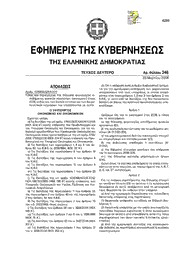
Greek Government Gazette: Part 2, 2006 no. 346
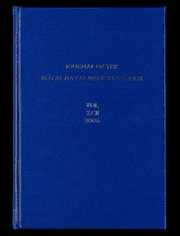
JRNMS VOL 92
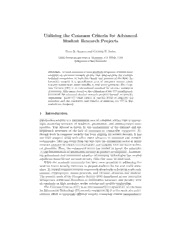
DTIC ADA484724: Utilizing the Common Criteria for Advanced Student Research Projects

BİR DEVLET ADAMI OLARAK FAİK ALİ OZANSOY
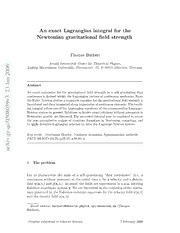
An exact Lagrangian integral for the Newtonian gravitational field strength
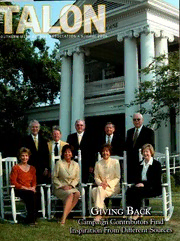
Talon, The
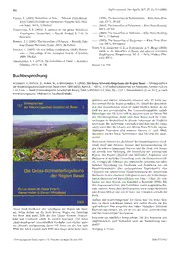
Buchbesprechung: Die Gross-Schmetterlingsfauna der Region Basel

NASA Technical Reports Server (NTRS) 20060051773: A Low Cost Spacecraft Architecture for Robotic Lunar Exploration Projects

An Integral Guide to Recovery: Twelve Steps and Beyond
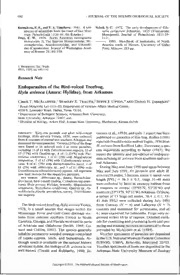
Research Note - Endoparasites of the Bird-voiced Treefrog, Hyla avivoca (Anura: Hylidae), from Arkansas
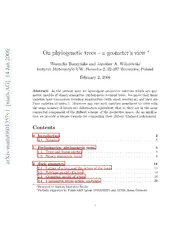
On phylogenetic trees - a geometer's view

Pass the PSA
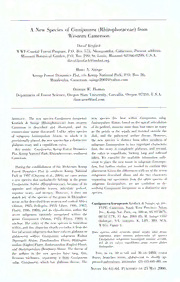
A New Species of Cassipourea (Rhizophoraceae) from Western Cameroon
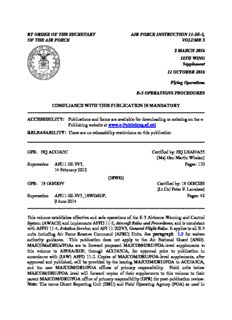
BY ORDER OF THE SECRETARY OF THE AIR FORCE AIR FORCE INSTRUCTION 11-2E-3 ...
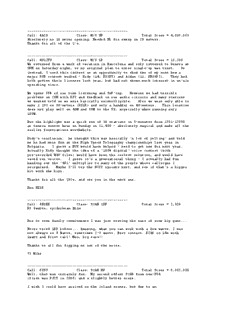
Call: 4A2S Class: M/S HP Total Score = 4839663 Absolutely no 10 mete

Marquem, irmãos, marquem!
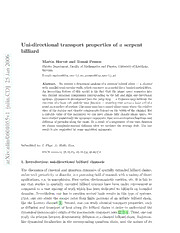
Uni-directional transport properties of a serpent billiard
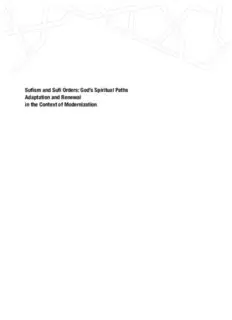
Sufism and Sufi orders : god's spiritual paths ; adaption and

